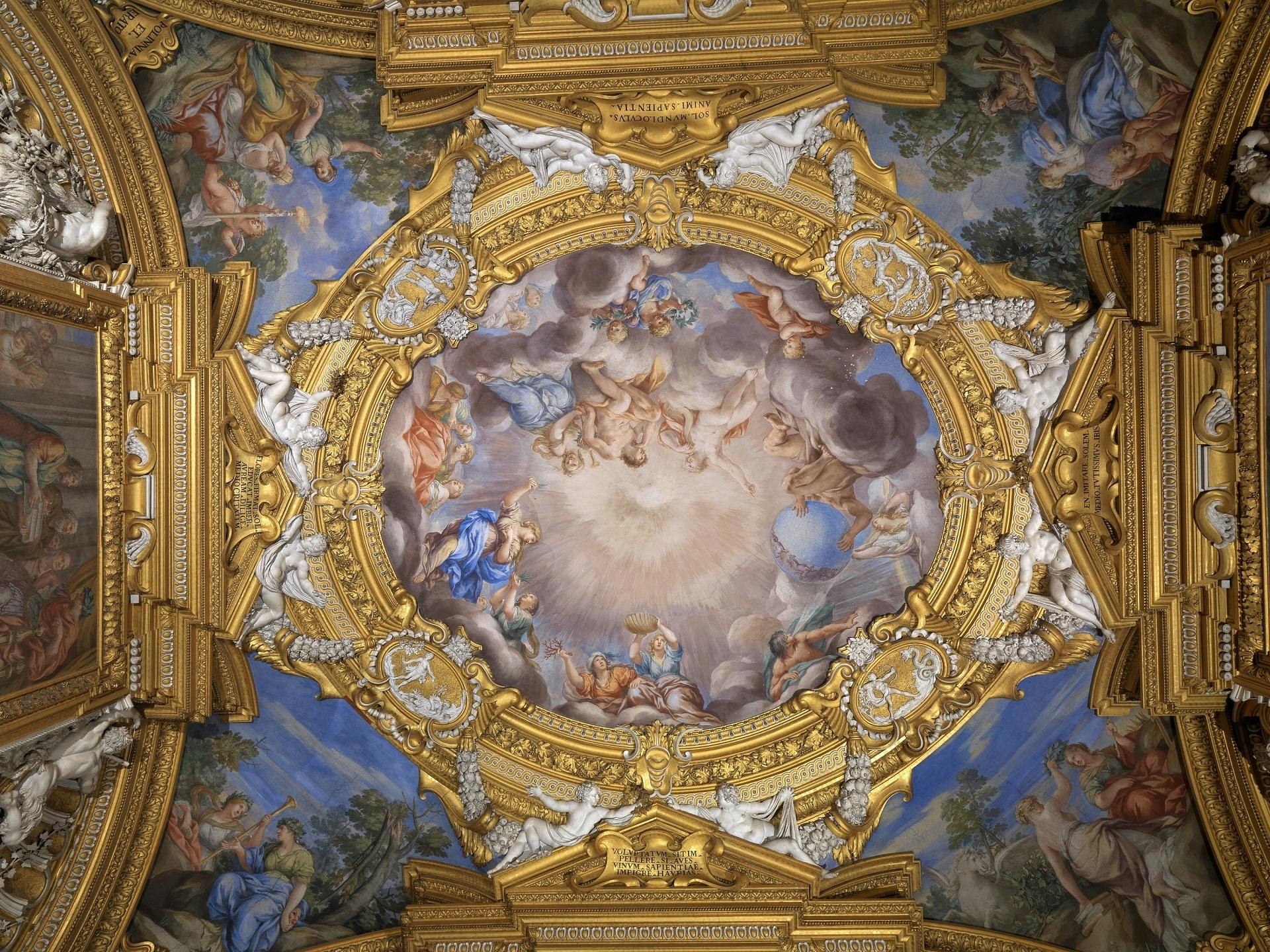Apollo Room
Pietro Berrettini, known as Pietro da Cortona (Cortona 1597 - Rome 1669) Ciro Ferri (Rome 1634-1689)
During the period of the Medici court, the room named after Apollo was used as antechamber for the “ordinary nobility”, meaning it was used by gentlemen who were waiting to be received by the Grand Duke inside the Throne Room. The designs for the decorations are by Pietro da Cortona, who painted the main fresco in the centre of the vault, depicting the Medici Prince brought before Apollo by Fame. The fresco was painted not long before the artist left Florence to return to Rome in 1647 and Ciro Ferri, a loyal pupil of Cortona, completed the decorations in the room, fifteen years later (1659-1661), after being appointed to do so by the Grand Duke. His are the frescos in the lunettes and the superb stucco cornice - a model that was then copied throughout Europe, based on the designs and cartoons left by his teacher.
The scene continues the ideal path of the prince’s political and moral education, illuminated by Apollo and then guided along the path of knowledge by the laws governing the cosmos, as evoked by the celestial globe supported by Hercules, an obvious reference to Galileo's recent discoveries. To warn the future sovereign of the weight of responsibility from government and the need to be educated for the task by the Arts and by study, some of the best-known feats of the Greek god are shown in the stucco medallions below. The square frames show the emperors and condottieri from antiquity who favoured the development of culture - including Augustus, intent upon listening to the reading of the Aeneid, or Alexander the Great receiving the poems of Homer - and in the corbels, Apollo’s companions, the Muses. A significant new element is introduced not only by the pictorial cycle but also by the articulated group of white stucco and gilt figures that disrupt the renaissance style of the architectural setting, and animate the ceiling with an illusion of male sculptures holding up the heavy festoons and satyrs wrapped in vine tendrils.
Room of Venus
Pietro Berrettini, known as Pietro da Cortona (Cortona 1597 - Rome 1669)
Mars Room
Pietro Berrettini, known as Pietro da Cortona (Cortona 1597 – Rome 1669)
